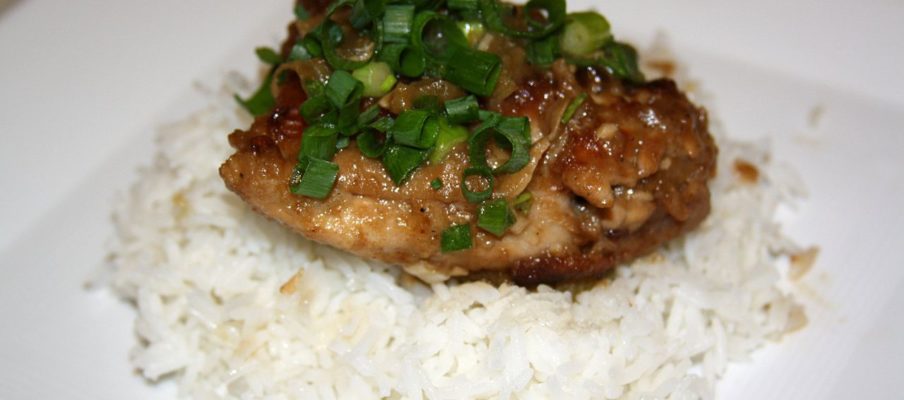Adobo is perhaps the most popular Filipino dish next to Lechon which is the national dish. If lechon is the “king” of Filipino foods, adobo is the “common Filipino.” Every true Filipino knows how to cook adobo. Abobo perhaps is as old as Filipino culture itself. Historians have recorded that even before the Spanish colonists arrived, indigenous Filipinos were well-versed with preparing their food with vinegar and salt. This won’t come as a surprise to you if you are familiar with how fast food can spoil in tropical climates.
This cooking method reminded the colonial Spaniards of the dish from their homeland called adobar. Adobar, which means “to marinate,” is thought to have influenced the dish we know today that all Filipinos know and love.
Filipinos typically cook adobo using either chicken or pork, or a combination of both (called “chicken-pork adobo”). Chicken tends to be slightly more common than pork, so chicken adobo what is covered in this article. Besides, it’s easier to get chicken adobo right compared to pork adobo.
If you want pork adobo, you can substitute the chicken with the pork cut into two-inch cubes.
Perhaps one of the few skills that can match Filipinos’ expertise in takings selfies is their ability to cook. Filipinos sometimes say, “It’s okay not to know how to cook, but you should at least know how to cook adobo.”
Adobo is a sure win. Adobo is the quintessential home-cooked dish in the Philippines and for the Filipinos diaspora abroad. Remember these words of wisdom:
If you want to win over a Filipina (woman), surprise her with an adobo. Or, as the cliché goes, the best way to a Filipino (man) heart is through his stomach, and it is adobo!
Filipino gatherings are always centered around food. Oftentimes, it will be a potluck party. It’s often a good gesture to bring something to add to the table. If you find yourself invited to one of these Filipino gatherings, fear not! Adobo will always be there to save the day.
You don’t know how to cook abodo? Don’t worry. Here in Talk Tagalog we will help you with everything you need to know about Tagalog, including cooking recipes. Awesome, huh? Without further ado…
How to cook Chicken Adobo (Paano magluto ng Adobong Manok?)
| how = paano | cook = luto | chicken = manok |
Cooking chicken adobo is quick (mabilis) and simple (madali). One key step is to marinate (pagbabad) the chicken to make it more flavorful. If you are pressed for time, feel free to skip this step, but make sure to simmer (pagpakulo) the chicken longer than 30 minutes to better infuse the flavors into the meat.
| Ingredients | Mga Sangkap |
| 2 lbs. chicken, cut into pieces | 2 (dalawang) librang manok, piniraso |
| 2 dried bay leaves | 2 (dalawang) tuyong dahon ng laurel |
| 1 cup soy sauce | 1 (isang) tasang toyo |
| 4 tablespoons vinegar | 4 (apat) na kutsarang suka |
| 5 cloves garlic, crushed | 5 (limang) butil ng bawang, dinikdik |
| 3 ½ cups water | 3 ½ (tatlo’t kalahating) tasang tubig |
| 3 tablespoons cooking oil | 3 (tatlong) kutsarang mantika |
| 1 teaspoon sugar | 1 (isang) kutsaritang asukal |
| ¼ teaspoon salt (optional) | ¼ (isang ikaapat) ng kutsaritang asin (pwedeng wala) |
Step-by-step instructions
- Combine the chicken, soy sauce, and garlic in a large bowl. Mix well.
Haluin (combine) ang manok (chicken), toyo (soy sauce) at bawang (garlic) sa malaking mangkok (bowl). Haluin (mix) ng mabuti (well).
- Marinate the chicken for at least an hour. The longer the marination time, the better. You may marinate the chicken overnight.
Ibabad (marinate) ang manok ng hindi baba sa isang oras (hour). Mas mahabang oras ng pagbabad, mas maigi (better). Pwede mo ibabad ang manok hanggang kinabukasan.
- Heat a pot. Then, pour the cooking oil.
Painitin (heat) ang kaldero. Pagkatapos, ibuhos (pour) ang mantika (oil).
- When the oil is hot enough, pan fry the marinated chicken for 2 minutes per side.
Kapag tama (enough) na ang init (heat) ng mantika, prituhin (fry) sa kawali (frying pan) ng dalawang minuto (minutes) kada gilid (side) ng ibinabad na manok.
- Pour in the remaining marinade, including the garlic. Add water. Bring to a boil.
Ibuhos ang natitirang (remaining) binabaran kasama ang bawang. Magdagdag (add) ng tubig (water). Hintayin (bring) na kumulo (boil).
- Add the dried bay leaves. Simmer for 30 minutes or until the chicken gets tender.
Idagdag (add) ang tuyong (dried) dahon (leaves) ng laurel. Pakuluan (simmer) ng tatlumpong minuto o hanggang (until) sa lumambot (tender) ang manok.
- Add vinegar. Stir and cook for 10 minutes.
Idagdag ang suka (vinegar). Haluin (stir) at lutuin (cook) ng sampung minuto.
- Pour in the sugar, and salt. Stir and turn off the heat. Serve hot.
Ibuhos ang asukal (sugar) at asin (salt). Haluin at patayin (turn off) ang kalan. Ihain (serve) ng mainit (hot).
Done? Voila! The famous chicken adobo!
Wait. One more step. Don’t forget to announce to the host loud enough for others to hear that you cooked this adobo yourself.
“Ako ang nagluto nito.” (I cooked this.)
Watch their jaws drop. You can thank me later.
What to eat with Chicken Adobo
So were you able to cook abodo? Let’s dig in. But what should you eat it with? The best partner of chicken adobo is steamed white rice. Better yet, try pour the adobo’s sauce over a nice hot serving of rice.
Behold! The savory goodness of the salty sauce is a perfect match for the plain sweet starchiness of the rice. All Filipinos know, abodo sauce over white rice is simply heavenly!
